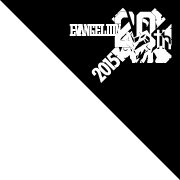Enduring the “Wonder Festival Crash”
in the early 90s
From Ultra Kaiju to robot anime like Gundam. In the 80s, when garage kits were created, ameteur fans got their hands on handmade kits by gathering at model events run by fans in various places. Among those, at the first Wonder Festival in ‘84, which began with a mere 10 dealers, there were around 700 people according to Kaiyodo data. The following year it suddenly exceeded 2,500 people, and in the summer of ‘91, there were more than 12,000. That same year, General Projects (Gainax), wanting to focus working on their own projects, transferred Wonder Festival’s organization to Kaiyodo.
“They trusted us with it because of our long friendship, but by chance, the number of attendees dropped drastically in ‘91, haha. The following year, we were no longer able to sell anything related to Gundam, which had always been the most popular thing at Wonder Festival. JAF-CON, a model event organized Bandai and Hobby Japan, got a monopoly on those works.”
Garage kits didn’t go beyond being fun for amateurs at first, but as molding techniques were refined, dealers who earned a lot of profit at events increased.
Their products competed with existing manufacturers’ goods, so they couldn’t overlook the sales of figures without consent. The Wonder Festival then created the “One-Day Limited Licensing System.” Simply put, through this ground-breaking system, organizers of an event where fans sell secondary creations using characters under copyright become a point of contact and receive authorization for product sales from the copyright source for the day of the event. Details can also be found in the online column, “The Evolution of Figures and Neon Genesis Evangelion.”
“Even manufacturers, who had just dismissed them as toys for otaku at first, couldn’t ignore them after seeing the quality. There were restrictions on the consent given to garage kit manufacturers and amateurs, though. In ‘92, Sailor Moon became a big hit, establishing the bishoujo figure genre, but we couldn’t work on these without getting permission, either. We had finally taken over Wonder Festival, but there was a lot of adversity in the beginning, haha.”
The next 2~3 years were spent flying low, remaining unnoticed, but since ‘95, the situation has changed entirely.
“A fair wind called ‘Eva’ blew our way while we were dependent on special effects monsters and OVA characters. Hits also came in the form of games where beautiful girls appeared around that time, such as “Tokimeki Memorial” and “Sakura Wars.” The entire garage kit world, specializing more in human models than robots if I had to choose, built up strength. Through this, the number of attendees at Wonder Festival surpassed those of the model events organized by the major companies that had crushed us before.”
For a time, the number of attendees had dropped to 5,000 people, but in ‘97, while the Eva film was a hot topic, it surpassed 20,000. Fans still talk about how the venue was packed with Eva goods at the time. The venue also moved from the Tokyo International Trade Center in Harumi to the larger Tokyo Big Site. The numbers kept steadily increasing, and nowadays we get nearly 60,000 hobby fans at Makuhari Messe International Exhibition Hall. As far as model sales events go, that scale is the best in the world.
“Still, at that time in ‘95, I wasn’t all that interested in Eva. I was already nearly 40 years old then, and my senses had dulled towards new characters. When I first saw Unit 01, I laughed and thought, ‘What the heck is this? What’s a robot doing wearing shoes?’ Conversely, the ones going on and on about it when it started broadcasting were the sculptors Bome, who likes bishoujo figures, and the late Taku Sato, energetic and in his 20’s. I was the weird one from that side, so I just said, “Why don’t I do what I like?” (T/N!!!: I had a lot of trouble with this line)

